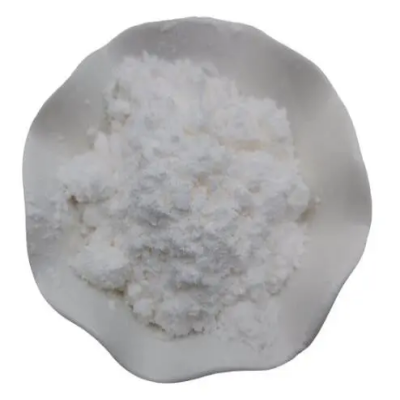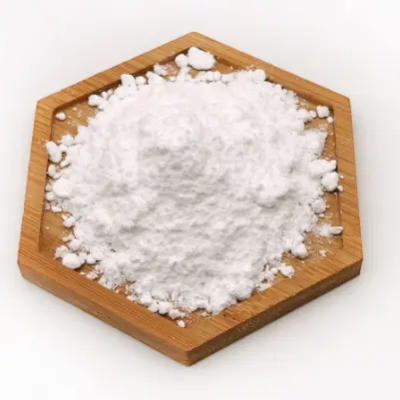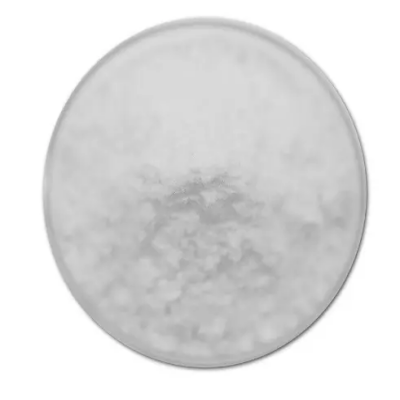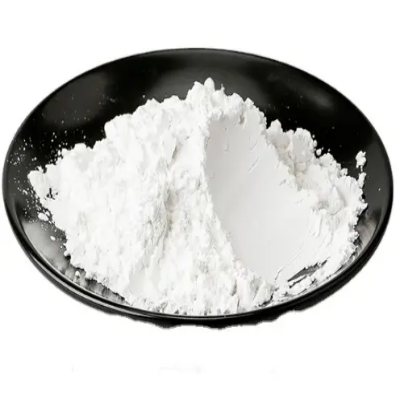-

(R)-(1-Methylpyrrolidin-2-yl)methanamine CAS:66411-53-8
(R)-(1-Methylpyrrolidin-2-yl)methanamine is a chemical compound with versatile applications in pharmaceutical and research fields. This chiral amine derivative features a pyrrolidine ring substituted with a methyl group, possessing unique stereochemical properties that can influence its biological activity. The compound’s structural characteristics make it a valuable building block for synthesizing diverse molecules with potential pharmacological relevance. Its purity and specific stereoisomeric configuration are crucial for ensuring reliability and reproducibility in various scientific experiments and drug development processes.
-

(3S,4R)-1-benzyl-4-hydroxy-5-oxopyrrolidine-3-carboxylic acid CAS:871086-00-9
( (3S,4R)-1-benzyl-4-hydroxy-5-oxopyrrolidine-3-carboxylic acid is a chiral compound with potential applications in medicinal chemistry and organic synthesis. This molecule features a pyrrolidine ring substituted with a benzyl group at the 1-position, a hydroxy group at the 4-position, and a carboxylic acid functionality at the 3-position, all in a stereochemically defined configuration. The compound’s chiral centers and functional groups offer unique structural properties that can influence its reactivity and biological activities. Its stereochemistry and functional groups make it a valuable scaffold for designing bioactive molecules or exploring stereocontrolled chemical reactions.
-

(S)-1-Isopropyl-2-methyl-piperazine dihydrochloride CAS:884199-34-2
( (S)-1-Isopropyl-2-methyl-piperazine dihydrochloride is a chiral compound with applications in pharmaceutical research and organic synthesis. This molecule consists of a piperazine ring substituted with an isopropyl group at the 1-position and a methyl group at the 2-position, with two hydrochloride counterions. The compound’s chiral nature and structural features make it suitable for various experimental and pharmaceutical applications. Its stereochemistry and functional groups offer unique properties that can influence its reactivity and biological activities, making it a valuable scaffold for designing bioactive molecules or exploring stereocontrolled chemical reactions.
-

(R)-Amino-(tetrahydro-pyran-4-yl)-acetic acid methyl ester CAS:871301-35-8
(R)-Amino-(tetrahydro-pyran-4-yl)-acetic acid methyl ester is a chemical compound with potential applications in organic synthesis and pharmaceutical research. This molecule combines an amino group, a tetrahydro-pyran-4-yl moiety, and an acetic acid methyl ester functional group in a chiral configuration, offering unique structural features that can influence its reactivity and biological activities. The compound’s stereochemistry and functional groups make it a versatile building block for creating diverse organic molecules or studying stereochemical effects in chemical reactions.
-

(1S,2S)-2-(3-bromophenyl)cyclopropanecarboxylic acid CAS:2165565-11-5
(1S,2S)-2-(3-bromophenyl)cyclopropanecarboxylic acid is a chiral compound with potential applications in medicinal chemistry and organic synthesis. This molecule features a cyclopropane ring substituted with a 3-bromophenyl group and a carboxylic acid functional group in a stereochemically defined configuration. The compound’s chiral centers and aromatic moiety offer unique structural characteristics that can impact its reactivity and biological properties. Its stereochemistry and functional groups make it a valuable building block for designing bioactive molecules or investigating stereoselective chemical reactions.
-

(1S,2R)-2-(3-bromophenyl)cyclopropanamine hydrochloride CAS:2718998-70-8
(1S,2R)-2-(3-bromophenyl)cyclopropanamine hydrochloride is a chemical compound with potential biological and pharmaceutical applications. This chiral cyclopropanamine derivative contains a 3-bromophenyl group attached to a bicyclic amine structure, making it an interesting molecule for medicinal chemistry research. Its stereochemistry can influence its interactions with biological targets, potentially leading to specific pharmacological effects. The hydrochloride salt form enhances its solubility in aqueous solutions, facilitating various laboratory and medical applications.
-
![(1R,2S)-[2-(4-Bromo-phenyl)-cyclopropyl]-carbamic acid tert-butyl ester CAS:907196-12-7](https://cdn.globalso.com/xindaobiotech/K@NIE7HBAEP6E7J7DS140.png)
(1R,2S)-[2-(4-Bromo-phenyl)-cyclopropyl]-carbamic acid tert-butyl ester CAS:907196-12-7
( (1R,2S)-[2-(4-Bromo-phenyl)-cyclopropyl]-carbamic acid tert-butyl ester is a chiral compound with potential applications in medicinal chemistry and organic synthesis. This molecule comprises a cyclopropyl ring substituted with a 4-bromophenyl group, a carbamic acid functional group, and a tert-butyl ester moiety in a defined stereochemical configuration. The unique structure of this compound provides opportunities to explore its reactivity in chemical transformations and investigate its potential biological activities. Its chiral centers and functional groups make it a valuable building block for designing novel molecules or studying stereoselective reactions.
-

(1S,2S)-2-(2-isopropoxyethylamino)cyclopentanol hydrochloride CAS:1599293-28-3 199293-70-9
( (1S,2S)-2-(2-isopropoxyethylamino)cyclopentanol hydrochloride is a chiral compound with potential applications in pharmaceutical research and organic synthesis. This molecule comprises a cyclopentanol ring substituted with an isopropoxyethylamino group at the 2-position in a stereochemically defined configuration. The hydrochloride salt form enhances its solubility and stability, making it suitable for various experimental and pharmaceutical applications. The compound’s chiral centers and functional groups offer unique structural properties that can influence its reactivity and biological activities, making it a valuable scaffold for designing bioactive molecules or exploring stereocontrolled chemical reactions.
-

(S)-methyl 5-oxopyrrolidine-3-carboxylate CAS:428518-31-4
( (S)-methyl 5-oxopyrrolidine-3-carboxylate is a compound with significant applications in organic synthesis and pharmaceutical research. This molecule features a pyrrolidine ring substituted with a methyl ester group at the 3-position and a ketone functionality at the 5-position in an S-stereoisomeric configuration. The compound’s structure offers opportunities for diverse molecular modifications and synthetic pathways due to its functional groups, providing versatility for creating various derivatives or exploring chemical transformations.
-

Triethyleneglycolmonoethylether CAS:112-50-5
Triethyleneglycolmonoethylether, also known as triethylene glycol monoethyl ether, is a colorless liquid with a mild odor. It is commonly used as a solvent and coupling agent in various industrial applications. TEGMEE exhibits good solvency power and compatibility with many materials.
-

Tripropyleneglycol CAS:24800-44-0
Tripropyleneglycol, also known as 1,2,3-Tripropylene glycol or TPG, is a colorless, odorless liquid with the chemical formula C9H20O4. It is a polyether compound belonging to the class of glycols. TPG is soluble in water and miscible with many organic solvents. It is commonly used as a solvent, humectant, and coupling agent in various industrial applications.
-

Triethyleneglycolmomobutylether CAS:143-22-6
Triethyleneglycolmomobutylether, also known as triethylene glycol monobutyl ether, is a clear, colorless liquid with a mild odor. It is commonly used as a solvent in various industrial applications due to its high solvency power and low volatility. TEGMBE is utilized as a coupling agent, viscosity reducer, and in the production of coatings, inks, and adhesives.

